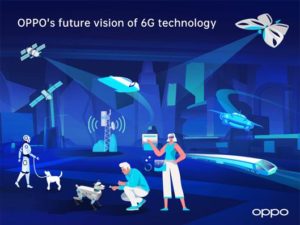 National, July 13, 2021: Today, the OPPO Research Institute officially released its first 6G white paper – “6G AI-Cube Intelligent Networking”. As one of the telecommunications industry’s first in-depth looks of how artificial intelligence (AI) can empower 6G network architecture, the white paper proposes a more detailed vision for the design of next-generation communication networks.
National, July 13, 2021: Today, the OPPO Research Institute officially released its first 6G white paper – “6G AI-Cube Intelligent Networking”. As one of the telecommunications industry’s first in-depth looks of how artificial intelligence (AI) can empower 6G network architecture, the white paper proposes a more detailed vision for the design of next-generation communication networks. “Technological development must be forward-looking. Mobile communication technology evolves in decade-long periods, and standardization of the next generation of communication technology is expected to begin in 2025, with commercial implementation following in around 2035,” said Henry Tang, OPPO’s Chief 5G Scientist. “Looking towards 2035, OPPO expects the number of intelligent agents in the world to far exceed the number of humans. Therefore, the next generation of communication technology, 6G, should be able to serve the needs not only of people but of all forms of intelligence and their various interactions. With this end goal in mind, we have carried out the early technical research and system design.”
“Technological development must be forward-looking. Mobile communication technology evolves in decade-long periods, and standardization of the next generation of communication technology is expected to begin in 2025, with commercial implementation following in around 2035,” said Henry Tang, OPPO’s Chief 5G Scientist. “Looking towards 2035, OPPO expects the number of intelligent agents in the world to far exceed the number of humans. Therefore, the next generation of communication technology, 6G, should be able to serve the needs not only of people but of all forms of intelligence and their various interactions. With this end goal in mind, we have carried out the early technical research and system design.”